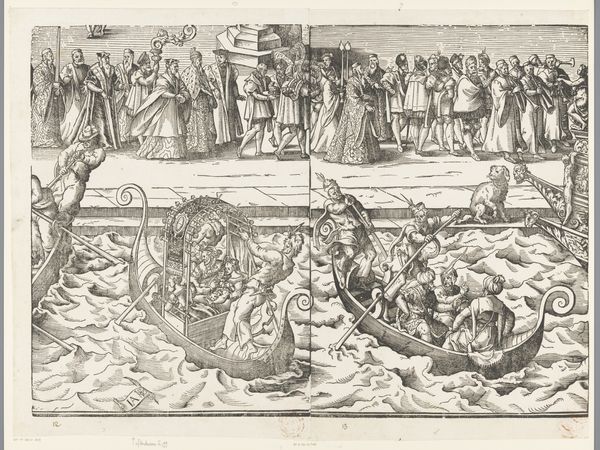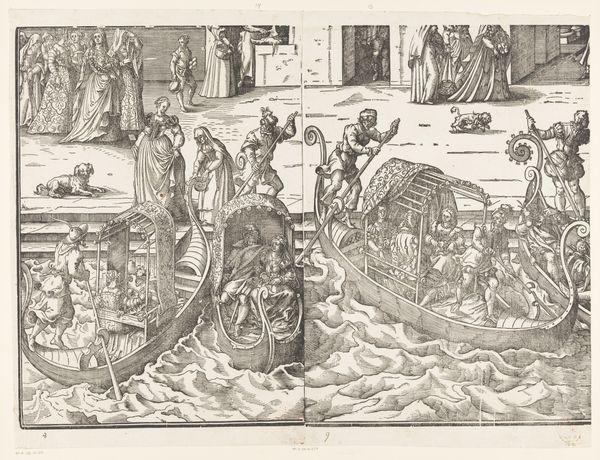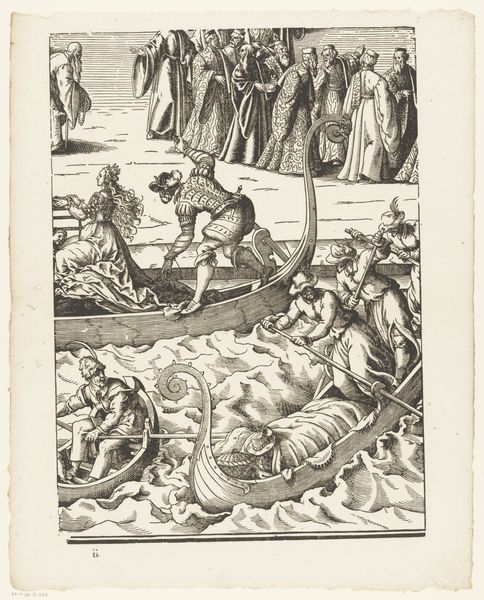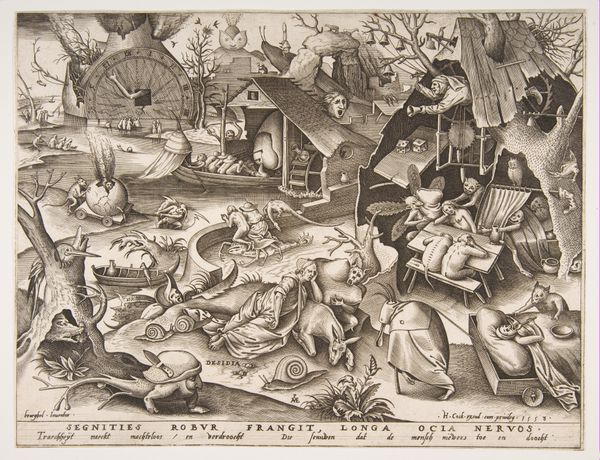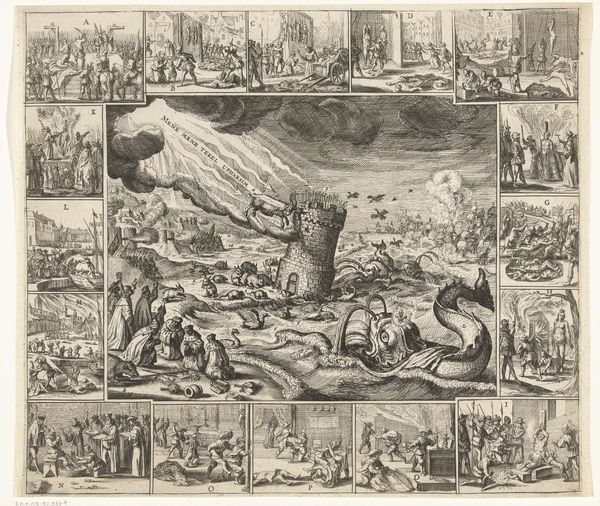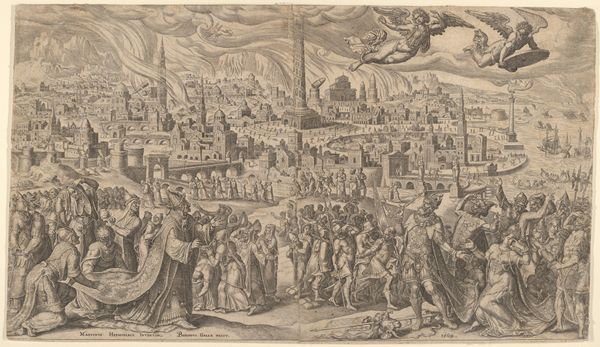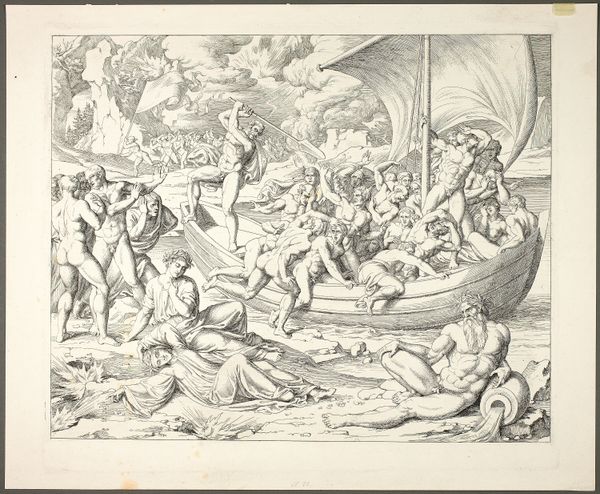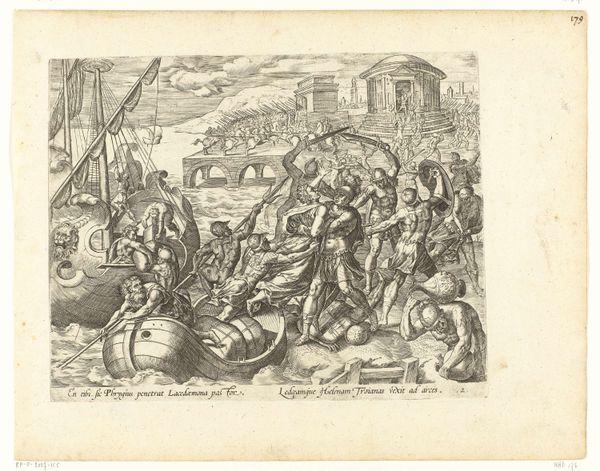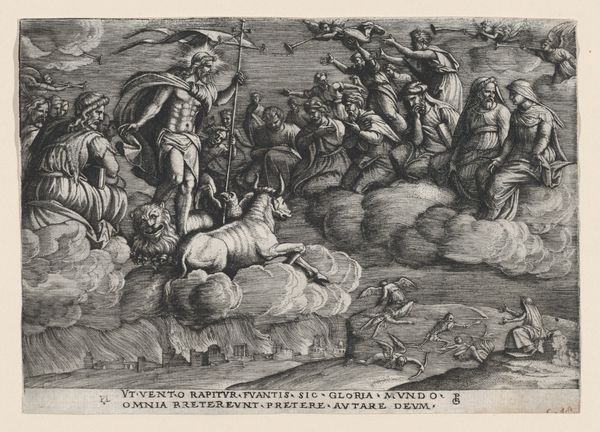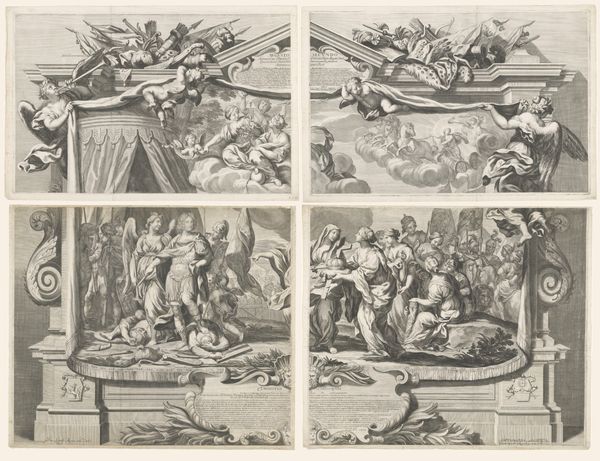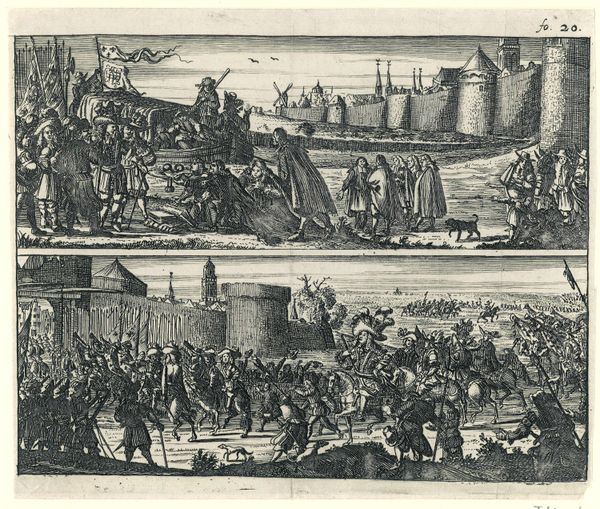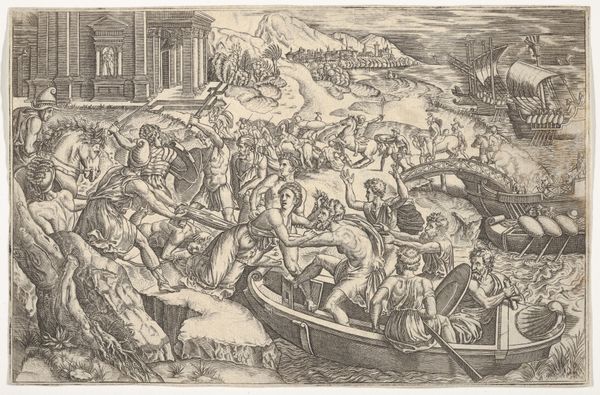
print, engraving
#
baroque
# print
#
pen illustration
#
genre-painting
#
history-painting
#
engraving
Dimensions: height 414 mm, width 293 mm
Copyright: Rijks Museum: Open Domain
Curator: Immediately, the frenetic energy and almost chaotic composition give me a sense of anxiety. There's so much visual information crammed into the scene. Editor: And yet that detail tells a story, doesn’t it? This is “Festa della Sensa (eleventh part)," created by Jost Amman around 1679, currently held at the Rijksmuseum. It’s an engraving depicting the Feast of the Ascension in Venice. Curator: An engraving, you say? I’m especially interested in that aspect. Looking at the lines, you can see the labor-intensive process behind each figure, each wave. It speaks volumes about printmaking’s role in distributing visual narratives to a wider audience. Did Jost Amman engrave this plate himself? Editor: Historical records suggest so. The scene showcases a flotilla of boats in what looks like the Venetian lagoon, all styled with those very high prows that are very symbolic to that area. It feels like a triumphant scene, though the mood you describe captures how power always includes some undercurrents of disruption or distress, wouldn’t you agree? Curator: Power here is really expressed in the fine, controlled lines – the texture, too! How did this exist within contemporary society, I wonder? How much would this engraving have cost to produce in labor and materials, and in what ways did access affect Venetian culture and artmaking? Editor: I read this piece as a cultural artifact first, given its symbolic significance, showing a ceremony rooted deeply in Venice's history and identity. Do you notice the figures’ elaborate clothes and how each little person has a distinctive identity in the throng? This kind of attention suggests more than just reporting a tradition; I think it expresses the value of Venetian culture through that time. Curator: Seeing how materials circulated connects back to my earlier point: if these kinds of artistic choices and labor power a whole network—how accessible were these prints to the broader public, and whom would they have portrayed? It gets one thinking of production chains as complex cultural diagrams that can connect people beyond those directly depicted in this moment or work! Editor: Yes, well, it highlights how visual symbolism is always interlocked in material reality and labor—the historical narratives carried across cultures depend significantly upon all of the work it requires in physical form too! Curator: So, reflecting more, what strikes me is the engraving and print’s relationship, which embodies many social networks – what is available, to whom, how and when. Thank you, that’s fascinating. Editor: I found looking at the visual tradition expressed by Jost Amman's symbols truly inspiring in seeing how much continuity connects us even from very faraway histories to modern times!
Comments
No comments
Be the first to comment and join the conversation on the ultimate creative platform.
